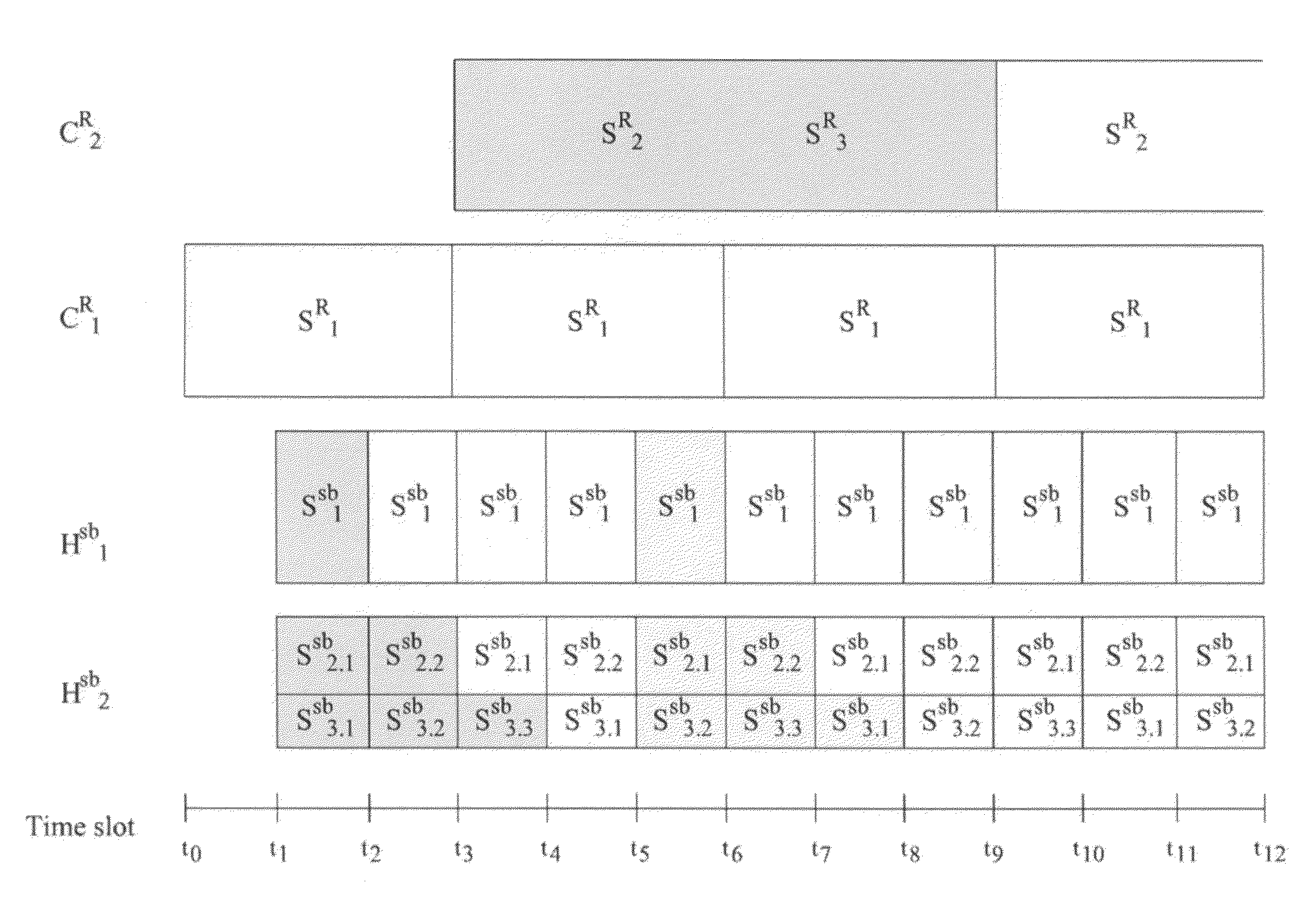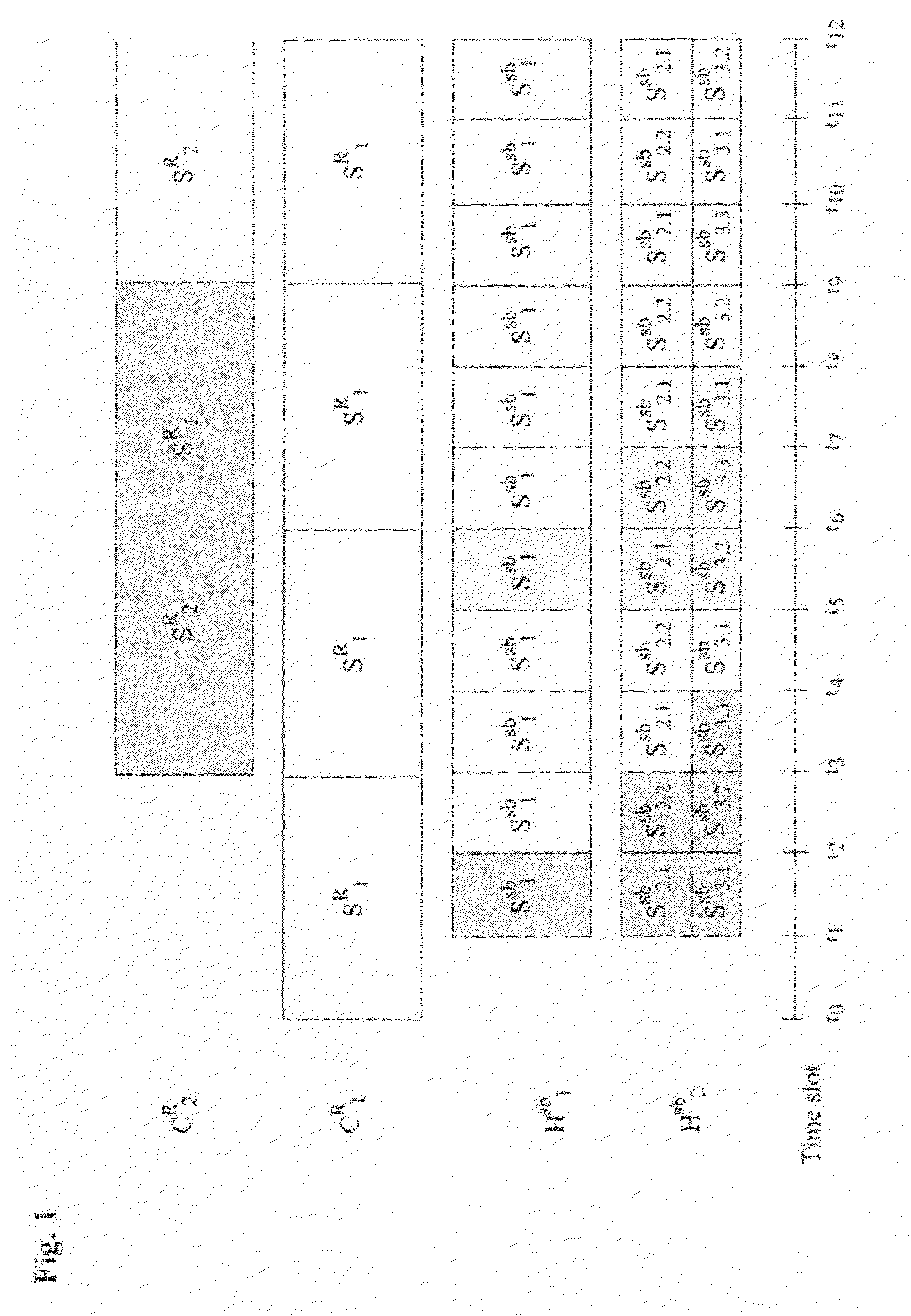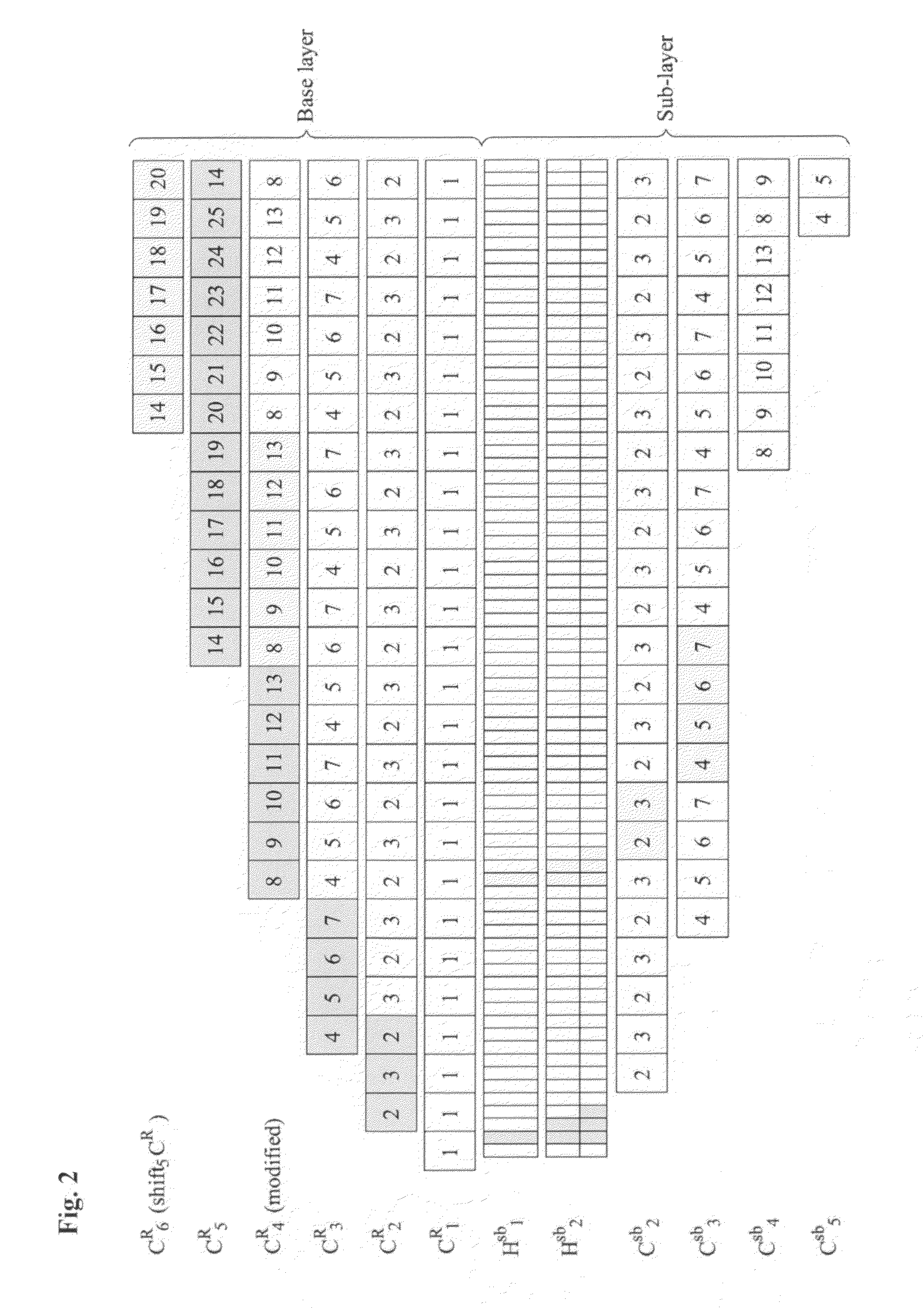Method for transmitting near video on demand (NVoD) using catch and rest (CAR) and sub-channels
a technology for video on demand and subchannels, applied in the field of video on demand transmission methods, can solve the problems of high service latency, users have to wait, and the bandwidth utilization efficiency is high, and achieve the effect of reducing service latency
- Summary
- Abstract
- Description
- Claims
- Application Information
AI Technical Summary
Benefits of technology
Problems solved by technology
Method used
Image
Examples
Embodiment Construction
[0022]Hereinafter, a preferred embodiment of a method for transmitting Near Video on Demand (NVoD) using Catch and Rest (CAR) and sub-channels according to the present invention will be described in detail with reference to the accompanying drawings.
[0023]First, a harmonic broadcasting scheme and a CAR broadcasting scheme which are the basis of the present invention will be described.
[0024]Harmonic broadcasting is one of the efficient periodic broadcasting schemes in terms of bandwidth utilization. In this scheme, a video L is divided into N segments and an i-th segment Si is further divided into i equal-sized sub-segments. The divided sub-segments are broadcast in respective channels. If it is assumed that the channel bandwidth required to send S1 is b, the bandwidth required by each channel is b / i. The total bandwidth required becomes HN*b, where HN stands for the total number of channels divided by the harmonic scheme and
[0025]HN=∑n=1N1n.
Therefore, if data are broadcast using th...
PUM
 Login to View More
Login to View More Abstract
Description
Claims
Application Information
 Login to View More
Login to View More - R&D
- Intellectual Property
- Life Sciences
- Materials
- Tech Scout
- Unparalleled Data Quality
- Higher Quality Content
- 60% Fewer Hallucinations
Browse by: Latest US Patents, China's latest patents, Technical Efficacy Thesaurus, Application Domain, Technology Topic, Popular Technical Reports.
© 2025 PatSnap. All rights reserved.Legal|Privacy policy|Modern Slavery Act Transparency Statement|Sitemap|About US| Contact US: help@patsnap.com



